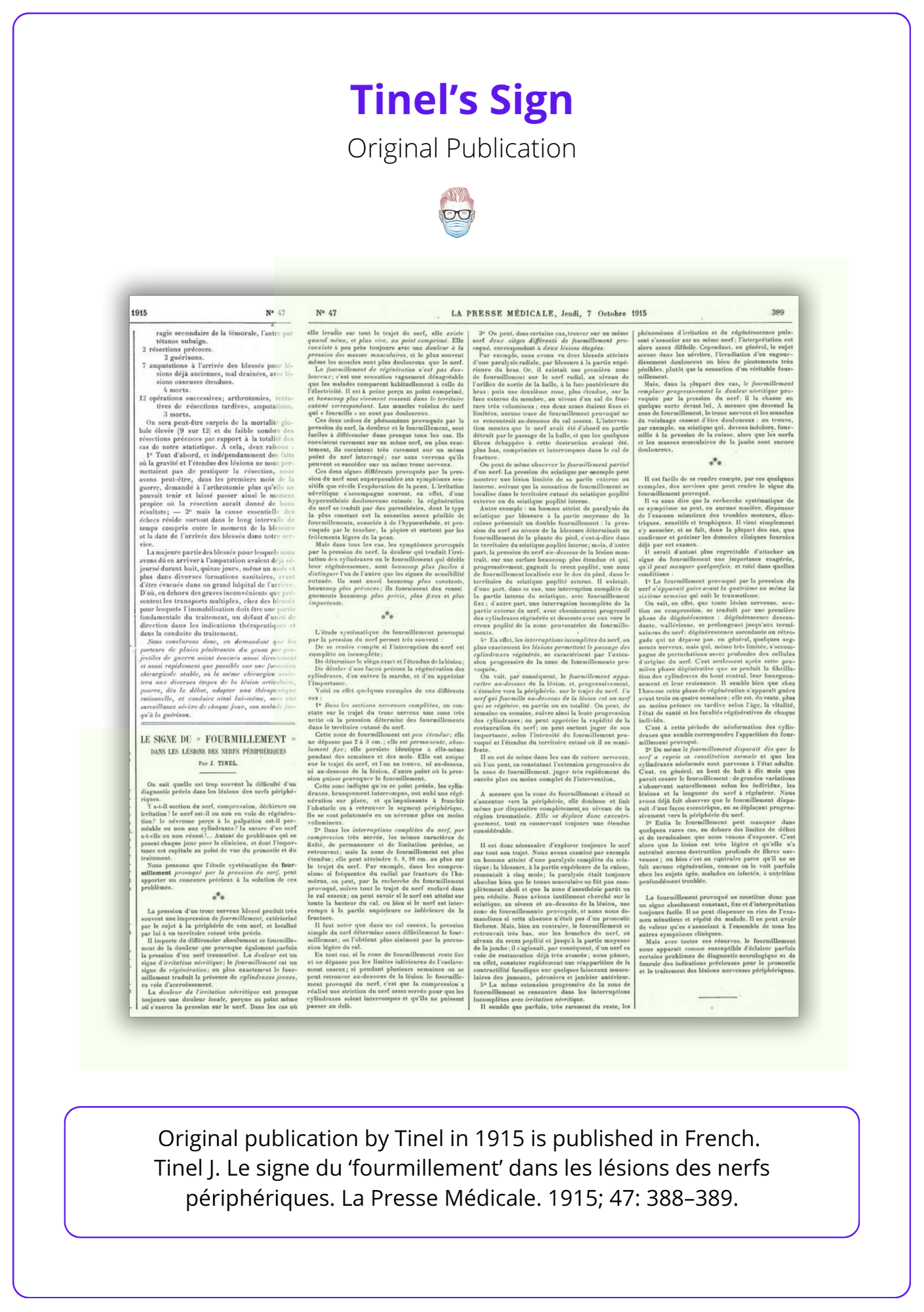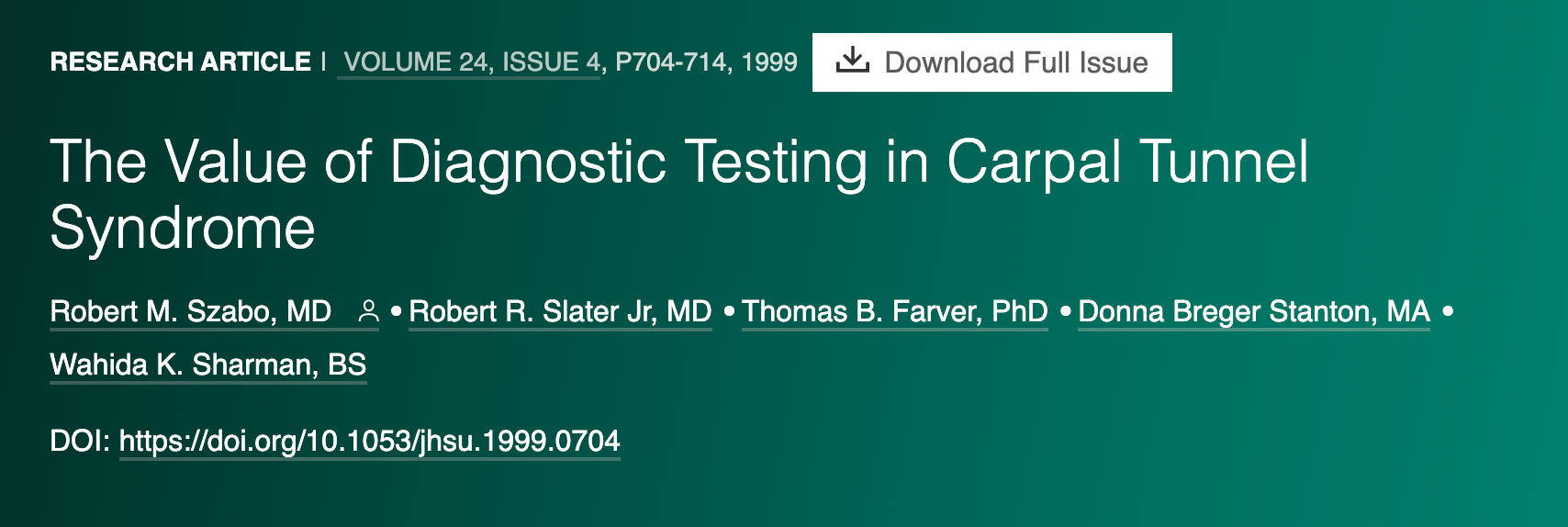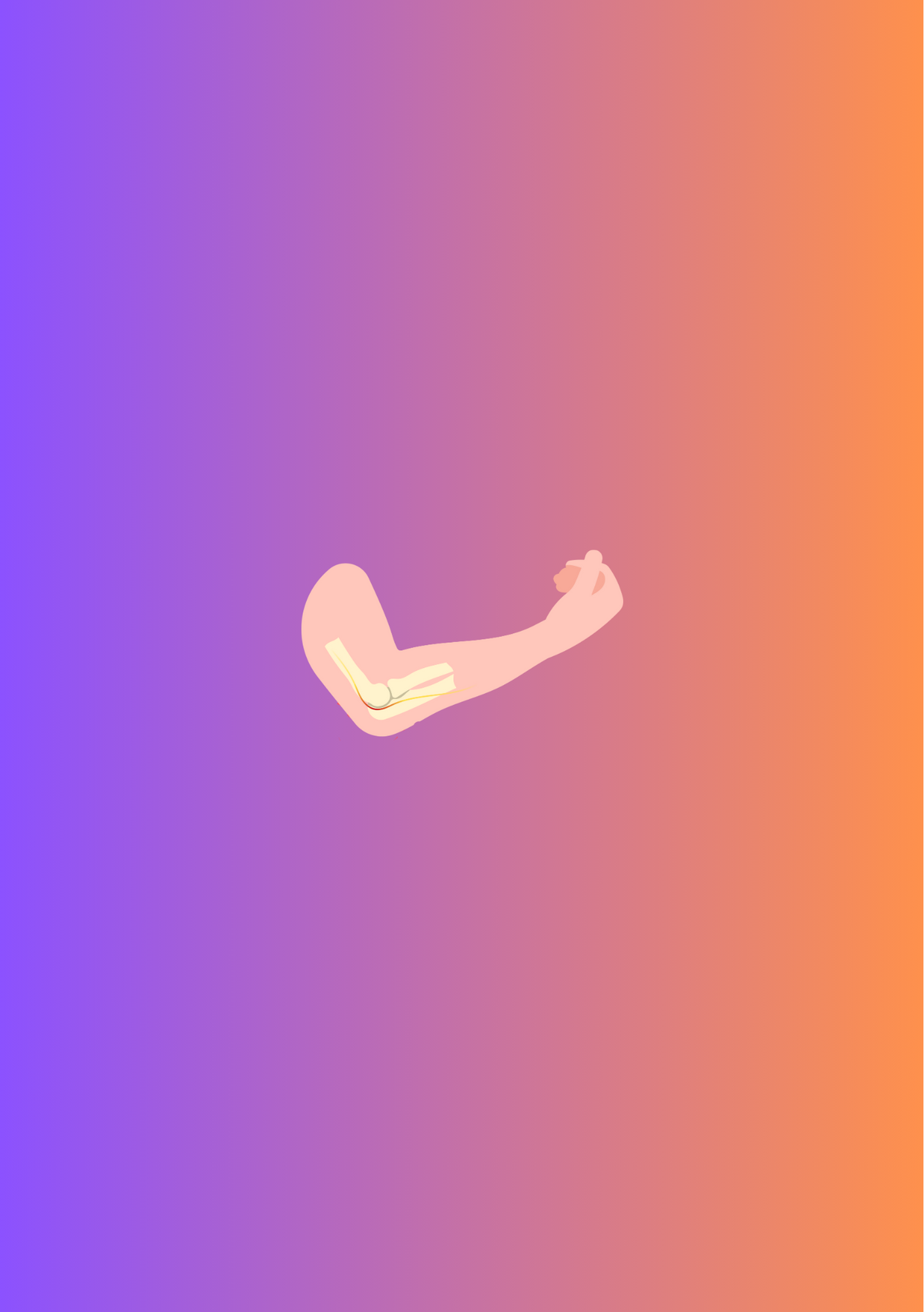Article Summary
An independent fresh perspective that can differ from the authors' abstract.
Article Summary
Level of Evidence: Case Series
Evidence Snapshot
This study falls under "Case Series." It's essentially a collection of patient cases, offering insights without the rigidity of a controlled trial.
Hypothesis
Tinel's Sign is more than just a clinical test; it's a valuable tool for assessing nerve damage. It helps in discerning the severity and location of nerve injuries and is an early detector of nerve regeneration.
Aim
The primary objective is to leverage Tinel's Sign for a comprehensive analysis of nerve damage – determining its completeness, pinpointing injury location, and tracking early nerve repair.
Methods
The study involved a series of six patients, focusing on observations rather than a structured follow-up or outcome measurement protocol.
Results The presence or absence of tingling sensations offers significant clues about nerve damage and recovery. Specific tingling patterns correlate with injuries to nerves like the radial and sciatic, and bullet wounds can exacerbate these effects.
Deep Dive
An anlaysis to identify key findings, limitations, clinical practice improvements, and additional reading.
Methodology
Key Point
The study, designed as a retrospective case series, aims to classify peripheral nerve injuries using tingling sensations as a diagnostic and prognostic tool. However, the procedure is vague about the specifics of pressure application and fails to address the standardization of differentiating between pain and tingling, considering the varied pain perceptions among individuals.
Study Design and Participants
- Design: Retrospective case series
- Location and Duration: Uknown
- Eligibility: Uknown
Objective:
The study aims to differentiate between various types of peripheral nerve injuries (severed, compressed, torn, obstructed, or regenerating) based on the tingling sensations produced by pressure on the nerve. The primary goal is to determine if this tingling can provide valuable diagnostic and prognostic information.

Procedure:
- Pressure is applied to an injured nerve trunk to determine if it produces a tingling sensation.
- This tingling sensation, felt by the patient at the periphery of the nerve, is localized to a specific skin area.
The procedure lacks detailed information on the application and duration of pressure, as well as the measurement methods for the tingling sensation. Additionally, there's no clarity on standardizing the differentiation between pain and tingling, given the subjectivity of pain perception among patients.
Results
Key Point
The study demonstrates that tingling sensations produced by pressure on a nerve can provide valuable diagnostic and prognostic information regarding peripheral nerve injuries. The results are interspersed with anecdotal evidence, making it difficult to differentiate systematic findings from one-off observations. A more structured approach, like tables or segmented sections, would make the findings clearer.
Patients Recruited
This study looked at a total of 6 patients. Their clinical features are summarised below.

The study's findings are mixed with anecdotal evidence, lacking a clear structure and concise summary. The absence of quantitative data or statistical analyses limits the ability to gauge the significance of the observations. Obviously, the sensitivity and specificity of this clinical examination has subsequently been proven.
Clinical Features
The tingling sensation has the following features
- Elicited by direct pressure on a specific point on the nerve's pathway at the point of axonal disruption.
- It is in a well-defined cutaneous area of the nerve.
- It is only on the path of the nerve and no other place can be found above or below the injury where pressure can cause tingling.
The author provides specific features of the tingling sensation, but the description remains subjective and lacks quantitative measures. Ambiguities in terms like "direct pressure" and the absence of visual aids or clear methodologies could hinder reproducibility.
Take Home Points
1 Learning Point, 1 impact on clinical practice, 1 article for further reading.
Learning Point: Pain vs. Tingling
It is extremely important to differentiate tingling from pain. Both can be elicited by direct pressure on a traumatised nerve but there is a key difference:
- Pain: localised hyperaesthesia to where the nerve is under pressure.
- Tingling: transmitted paraesthesia ("electricity") to a cutaneous area.
Tingling is a sign of axonal regeneration. They rarely co-exist on the same nerve.
Impact on Practice: Role of Tinel's Sign
The systematic study of tingling caused by pressure on the nerve very often enables us to:
- Find out if the interruption to the nerve is complete or partial.
- Determine the exact location and the extent of the injury.
- Detect regeneration of the axons at an early stage
Tingling can only be of use when combined with all the other clinical symptoms.
Further Reading
Tinel's vs Phalen's vs Durkan's - Who Wins?





